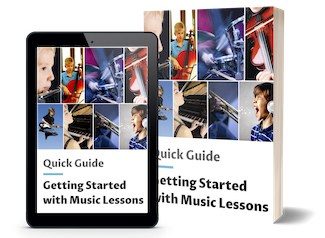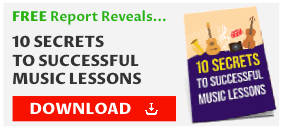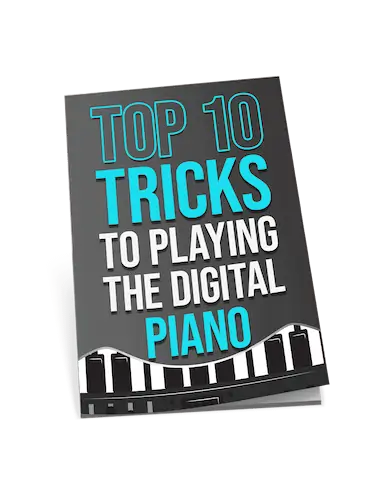I just got my hands on the RP102 Roland, and I can’t wait to tell you about it. If you’re searching for a budget-friendly digital piano that doesn’t skip on quality touch and amazing sound, the RP102 is a real standout.
With its 88 weighted keys and practice features built right in, I found it’s perfect for beginners and anyone wanting something compact and reliable. There’s also handy Bluetooth connectivity, so I can connect my phone and practice with interactive apps like Piano Partner 2—super easy and almost too much fun to put down!
What surprised me most was how good it feels to play—this is not another stiff digital piano. If you’re curious about what makes this model so inviting, stick with me as I share everything you need to know about the Roland RP102.
Overview of the RP102 Roland Digital Piano
I think the RP102 Roland digital piano stands out as an excellent choice for learning, practice, or home use. It combines realistic piano sound with convenient technology, practical features, and a compact design that fits into most rooms with ease.
Key Features and Specifications
The RP102 Roland is packed with features that make playing both fun and educational. It offers an 88-key PHA-4 Standard weighted-action keyboard, which feels a lot like an acoustic piano under my fingers.
It uses Roland’s SuperNATURAL sound engine, bringing out expressive, rich tones. There are over 200 built-in songs, plus handy functions like a metronome, Twin Piano mode for side-by-side practice, and Bluetooth for connecting with learning apps like Piano Partner 2.
Here’s a quick summary of its main specs:
| Feature | Detail |
|---|---|
| Keyboard | 88-key, weighted, PHA-4 |
| Polyphony | 128 voices |
| Speakers | 6W x 2 |
| Built-in Songs | 200+ |
| Bluetooth | Yes (for MIDI and apps) |
| Pedals | 3 (with half-pedal support) |
These features help me practice smarter, try new techniques, and even enjoy playing quietly using headphones if needed. The digital sheet music display and automatic page turning make learning efficient and interactive. For anyone curious, you can check out full details at Roland’s official RP102 page.
Roland Brand and RP Series Positioning
Roland is known for making digital pianos that are reliable and player-friendly. The RP102 fits at the entry-level range in the RP lineup but borrows technology from Roland’s more advanced models.
I see the RP102 as perfect for beginners and families, but even experienced players can appreciate its realistic sound and responsive keyboard feel.
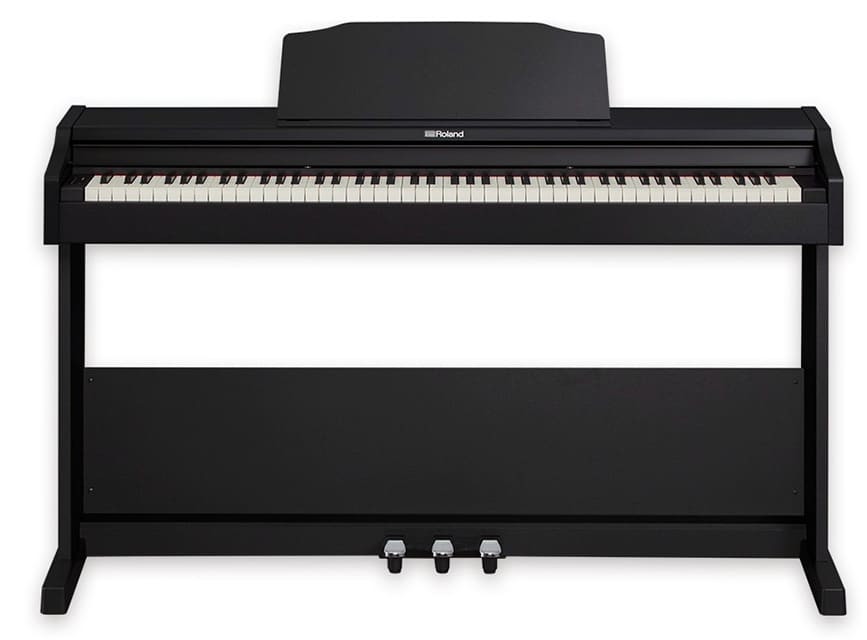
Roland designed this model to deliver value—solid quality, practical functions, and a straightforward interface at a friendly price point.
While the RP102 has recently been discontinued in favor of newer models, it’s still widely respected. I like that it avoids a learning curve and cuts down on maintenance hassles that come with traditional acoustic pianos.
Design and Build Quality
The RP102 is crafted with a classic upright look but keeps things modern and simple. I like the slim cabinet, which makes it easy to fit into small apartments or classrooms.
It weighs about 84 lbs (38 kg), so it’s possible for two people to move it without much trouble.
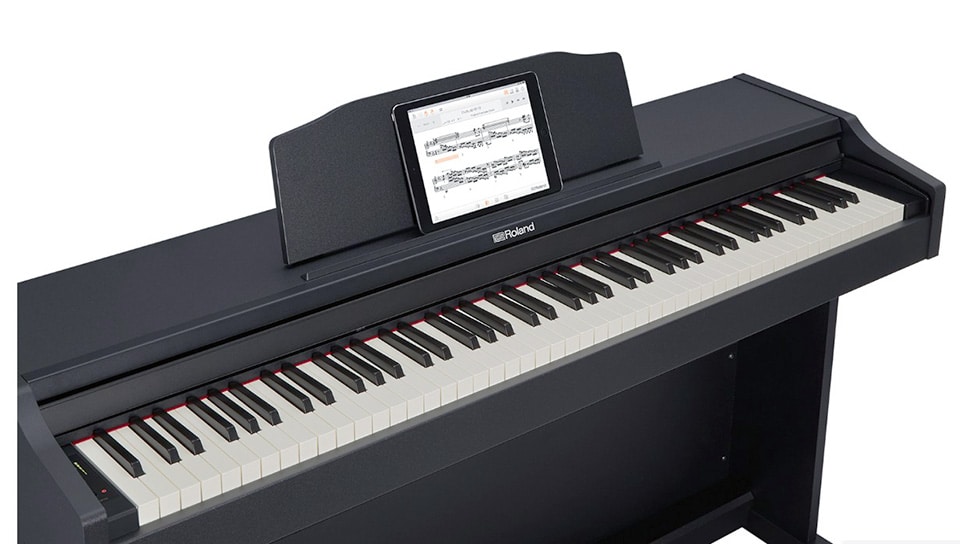
This piano has three sturdy metal pedals, giving me good control and an authentic playing experience. The slide-type keyboard lid is smooth and helps protect the keys when I’m not playing.
The finish is a handsome black color, making the RP102 blend into most decor styles. There’s nothing flashy—just a clean, traditional look that hides smart digital features inside. Users often mention the quiet keys, consistent feel, and how little maintenance it needs compared to an acoustic piano.
Sound Quality and Polyphony
I love how much depth and richness the Roland RP102 brings to every note I play. The sound is bright, full, and responsive, while the polyphony keeps up with even my busiest fingers.
Roland F140R
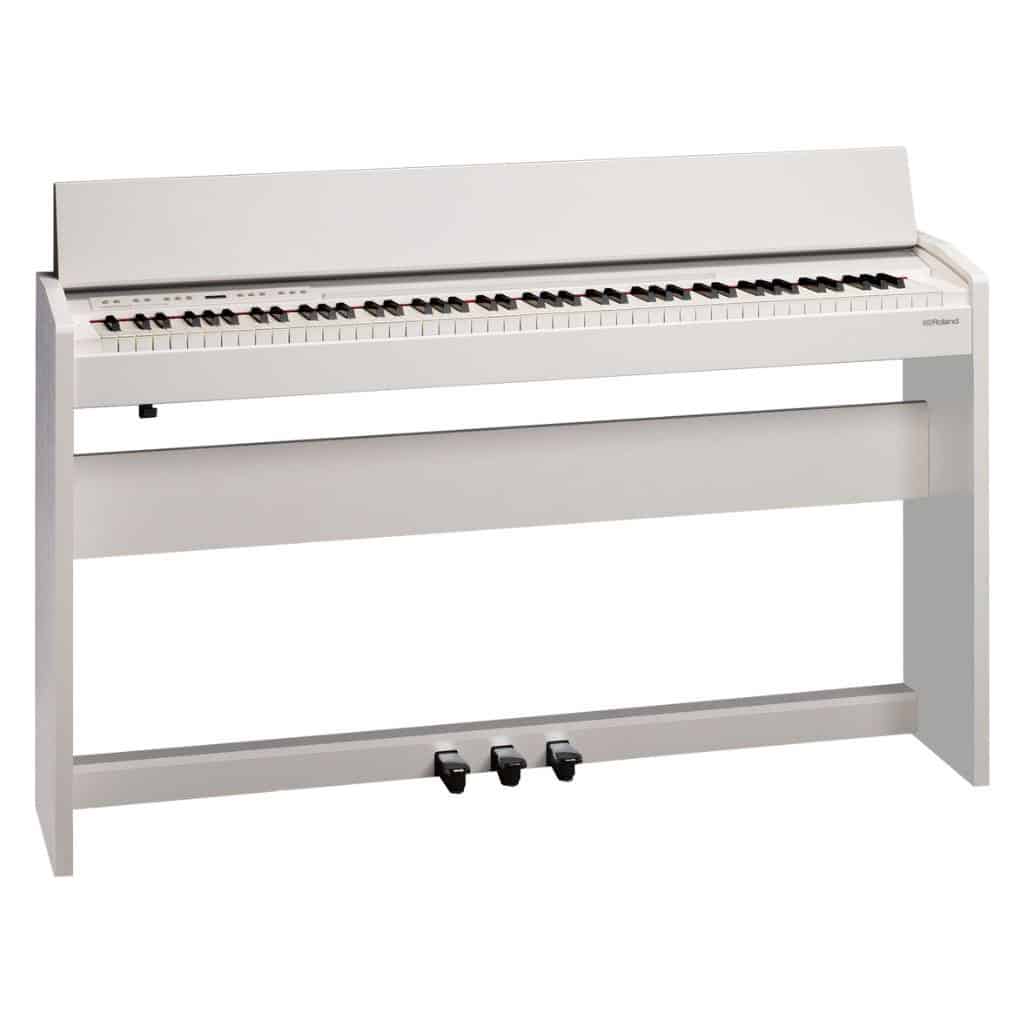
FEATURES: SuperNATURAL Piano Sound Engine
OTHER INFO: Weighted PHA-4 Standard Keyboard
- Has a sleek and space-saving design
- Allows for easy wireless connection to devices for audio playback and app integration
- No Touch Sensitivity Adjustment
When you click ‘Check Price’, you’ll see there are loads of great places to buy this item. Our personal favorite is Sweetwater for the US, and Thomann and Gear4Music for the UK & Europe.
They are the largest music retailers, with excellent customer service, competitive prices, really fast shipping, and the longest guarantees.
The professional musician who wrote this article combined many things,
from the product build, manufacturer’s reputation through to feedback
from other users, to create our famous TedScore™.
SuperNATURAL Sound Technology
The Roland RP102 uses SuperNATURAL Piano sound technology. This tech samples real acoustic pianos, then blends those sounds together to create smooth and natural tones.
I can feel the difference when I press the keys—the sound shifts dynamically based on my touch. It adds a realistic layer to every style, from soft ballads to loud chords.
The attention to detail is clear. The resonance, decay, and even the way the notes overlap give it an authentic piano experience. It’s perfect for beginners and experienced players alike who want realistic sound at home. If you’re curious, check out this review focused on the RP102 sound.
Maximum Polyphony Explained
olyphony is how many notes the RP102 can play at once. My RP102 comes with 128-note polyphony.
This means I can play with both hands, use the sustain pedal, and layer sounds without losing any notes. Even with dense pieces, every tone rings out clear and full.
There’s also enough polyphony for built-in demo and practice songs, so nothing ever gets cut off. For more on this topic, there’s a simple guide in this Roland RP102 product info. It makes practicing challenging music much smoother.
Instrument Voices and Sound Selection
I don’t just get one piano sound. The RP102 features 15 instrument voices, including four distinct pianos.
Besides piano, I can select electric pianos, strings, organs, and more. Switching voices is easy and only needs a button or two.
Here are a few voices available:
- Concert Grand
- Bright Piano
- Jazz Organ
- Strings
It also comes with over 200 built-in songs for various practice needs. This variety keeps my practice routine fresh and exciting, especially when I want to experiment with different tones.
Touch, Playability, and Piano Action
Nothing about a digital piano matters more to me than how it feels under my fingers. The Roland RP102 stands out with a natural action, a comfortable key surface, and pedals that help every player—from beginner to advanced—develop the right touch.
Weighted Graded Hammer Action
The action on the Roland RP102 uses a fully weighted, graded hammer system.
This means the keys on the lower end feel heavier, and the upper keys are lighter, just like a real acoustic piano.
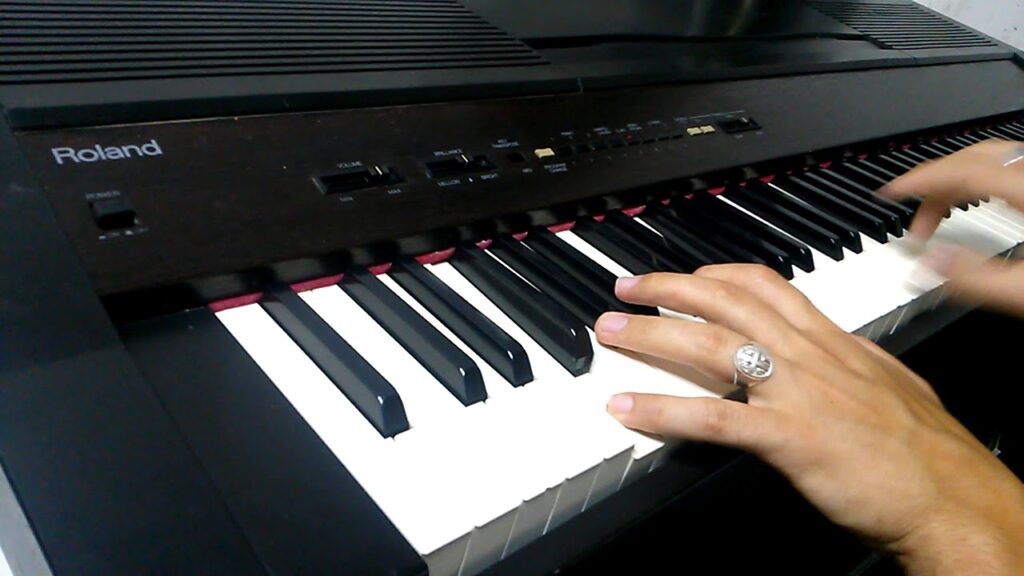
I appreciate this because it lets me develop proper finger strength and technique. Roland includes their PHA-4 Standard keyboard, which is not just for show—it’s responsive and captures quick, repeated notes well.
A 3-sensor detection system tracks every little movement, so even delicate passages or fast trills come out accurately. There’s a quiet, subtle click called escapement as I press keys halfway, making it feel much closer to an authentic grand than many digital pianos in this price range.
Ivory Feel Keyboard Surface
The keys on the RP102 have an Ivory Feel texture.
Instead of slippery plastic, each key has a gently textured surface that helps my fingers grip, even after a long session or on a hot day.
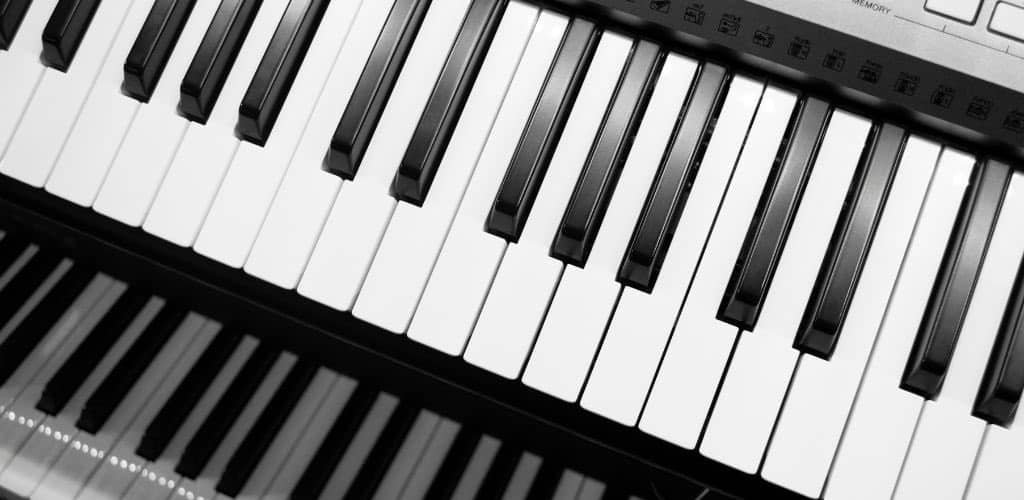
This finish isn’t just a luxury touch—my hands stick less, I sweat less, and I can focus more on the music. The white keys simulate ivory, while the black keys have a matte finish.
I find this helps with precise finger placement, especially when practicing scales or playing fast runs. The material also means less glare from lights, which makes sight-reading more comfortable for me.
Three-Pedal System Functionality
All three pedals—Sustain, Soft, and Sostenuto—come as part of the built-in pedal board on the Roland RP102. These are metal and shaped like traditional acoustic piano pedals.
Each pedal supports half-pedal detection, so I can use subtle foot movements to control sound length and blending, just like on an acoustic model.
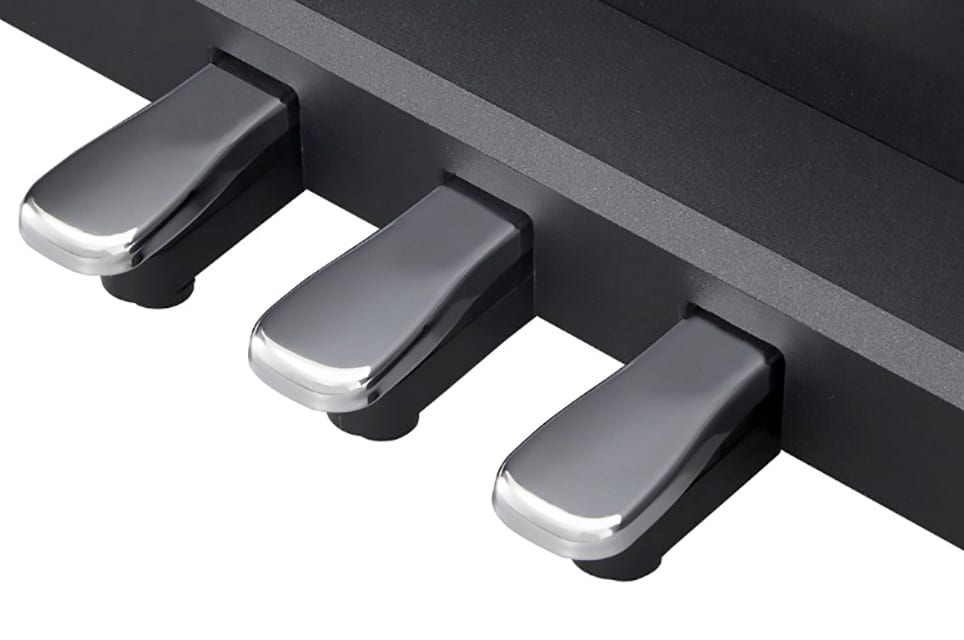
This helps me develop good pedaling technique from day one.
It’s nice that the pedals feel sturdy and don’t wobble underfoot. They respond well whether I’m playing gentle classical pieces or loud, dramatic chords, and I never have to worry about missing a note or sound transition.
Learning Tools and Practice Features
I find the Roland RP102 packed with smart features for learning and everyday practice. It has tools that help me play better, whether I’m just starting out or trying to master a favorite song.
Built-In Songs and Lesson Modes
One thing I love about my RP102 is its library of built-in songs. It offers classical pieces, exercises, and famous tunes right at my fingertips.
The lesson modes break these songs into manageable parts. I can practice just the right or left hand and take it slow until I’m ready to put both together.

There are clear step-by-step lessons. These encourage daily practice, which really speeds up my progress.
I sometimes track my improvement by replaying the same piece a few times and noticing how my timing and note accuracy get better. It feels good to see myself get more confident with each session.
Twin Piano Mode for Duet Playing
Twin Piano Mode is my go-to for practicing with someone else. It splits the keyboard into two equal ranges so two people can play on the same piano at the same time.
This is super handy for lessons. My teacher and I can sit side-by-side, and she can demonstrate parts while I follow along.
We don’t have to take turns or switch seats. It’s perfect for duets, sibling playtime, or even friendly little competitions.
I find that playing together in this mode really makes practice sessions more interactive and fun. No more feeling nervous about making mistakes when someone’s right there to help out.
Digital Sheet Music Integration
The RP102 connects easily to my tablet or phone by Bluetooth. By using Roland’s Piano Partner 2 app, I get access to loads of digital sheet music and interactive song features, making practice feel modern and engaging.
I can pull up scores on a bigger screen, turn pages hands-free, and even follow notes as they light up on the app. This helps me stay on track and learn new songs more quickly.
Switching between digital scores and different songbooks is smooth. I just tap a screen and I’m ready to go.
The connection with digital sheet music lets me explore new pieces every week without buying printed books. My practice always stays fresh and interesting.
Connectivity and Compatibility
I found that connecting devices to my Roland RP102 is simple and flexible. It supports both wireless and wired options, making it easy to link up with different tools and apps.
Bluetooth and MIDI Connectivity
Pairing my RP102 with other devices using Bluetooth is a breeze. This feature lets me connect wirelessly to compatible smartphones or tablets.
With Bluetooth, I can send and receive MIDI data. This is great for playing along with educational apps or recording my performances without any cables.
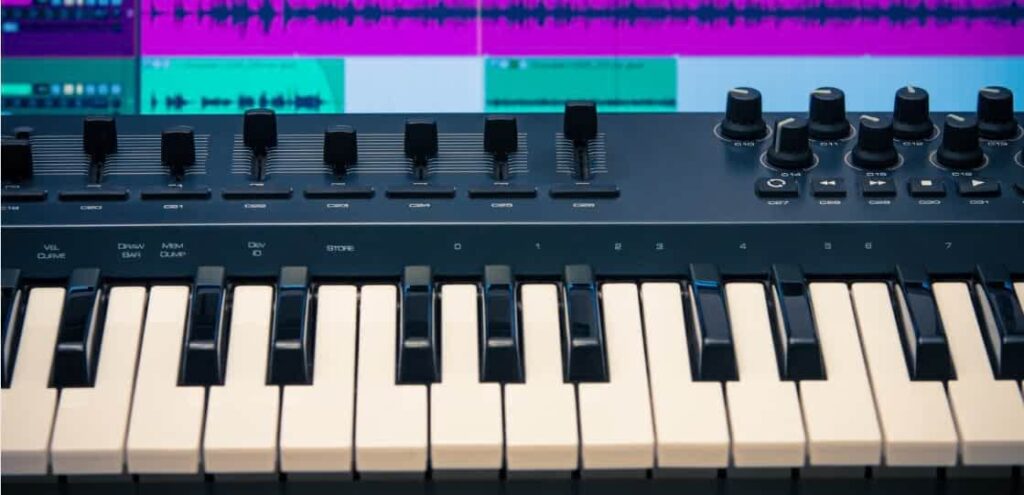
However, when I want the best stability, I use a USB cable for MIDI connections. The RP102 doesn’t have built-in Bluetooth audio streaming, but the wireless MIDI control is still very handy for daily practice.
Here’s a quick comparison:
| Feature | Bluetooth | USB |
|---|---|---|
| Wireless MIDI | Yes | No |
| Wired MIDI | No | Yes |
| Audio Streaming | No | No |
| For Apps | Yes | Yes |
Piano Partner 2 App Features
I love using the Piano Partner 2 app with my RP102. The app connects through Bluetooth MIDI and opens up fun features like interactive sheet music, rhythm patterns, and a visualizer for notes.
With this app, I can access digital scores right from my smart device. It even tracks my progress during practice sessions, so I can see where I need to improve.
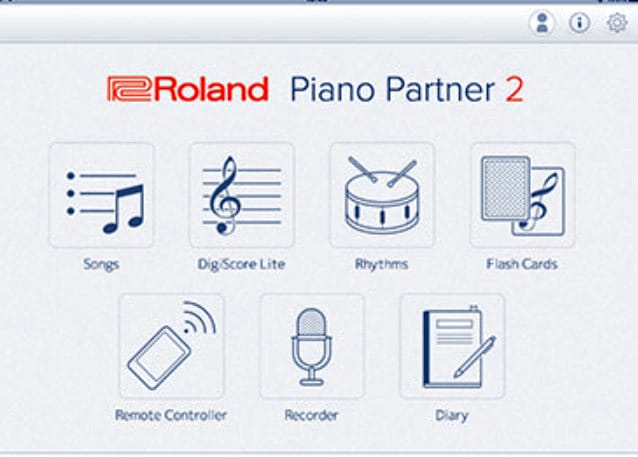
Piano Partner 2 also includes flashcard games and music exercises. I especially enjoy playing along with built-in accompaniments and trying out new songs using the app’s song library. Learn more about these features at the Roland support page for RP102.
USB Integration
When I want a stable connection, I plug the RP102 straight into my computer or mobile device by USB. This is perfect for recording, using software instruments, or connecting to music production software.
The piano acts as a standard USB MIDI device, so I don’t need extra drivers. Popular programs like GarageBand, FL Studio, or even basic learning tools work well over USB.
Some apps, including Piano Partner 2, even recommend a USB connection for better performance and reduced lag.
Choosing and Caring for Your RP102 Roland
I love how the Roland RP102 fits so many lifestyles. It’s reliable, easy to keep up, and simple to buy with good warranty support.
Ideal User Profiles and Skill Levels
The RP102 is great for beginners and intermediate players like me. It has 88 weighted keys, which makes it feel closer to a real acoustic piano.
If you’re just starting out, the built-in lesson features and practice tools make learning less intimidating.
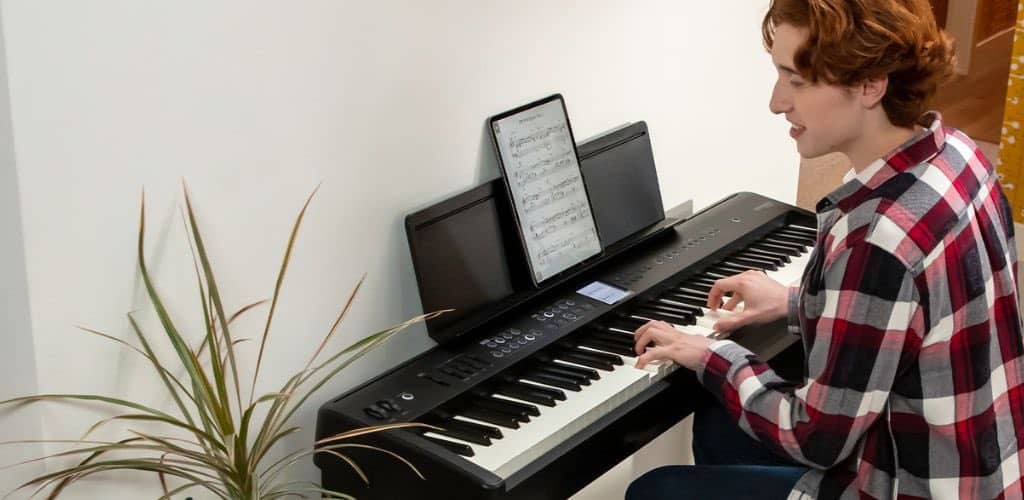
I also think more advanced players can use the RP102 for quiet practice since it has headphone support.
Families and students who want a piano that doesn’t take up too much space will appreciate the slim, upright look. It fits neatly against the wall and doesn’t crowd smaller rooms—perfect for apartments or bedrooms.
Maintenance and Durability
One thing I really appreciate is that the RP102 never needs tuning like an acoustic piano. I save money and time since I don’t have to schedule regular piano technician visits.
To keep it clean, I just dust the keys and cabinet with a soft dry cloth. The finish is solid and resists fingerprints, so it always looks nice.
The RP102 is designed for long life and regular use. Built-in modern electronics make it stable and dependable even after years of playing. It blends in well with a busy home and doesn’t need special care.
Where to Buy and Warranty Information
There are lots of places I can get a Roland RP102 digital piano, including music stores, online retailers, and Roland’s own website.
Most sellers offer at least a one-year warranty for peace of mind. Many stores provide in-house support and return options in case there’s a problem.
When buying online, it helps to look for sellers with clear warranty details. Registering the piano on the Roland website can also help with warranty claims down the road.
FAQ's
The RP102 comes with 88 weighted keys that feel just like an acoustic piano. I enjoy the built-in metronome, over 200 songs, and dual headphone jacks for quiet practice.
It also has Bluetooth MIDI to connect with music apps and Roland’s Piano Partner 2. The cabinet is slim, so it fits well in small rooms.
To connect, I press and hold the Bluetooth button on the panel until the Bluetooth light blinks.
Then, I open the Bluetooth settings on my phone or tablet, pick “RP102,” and confirm the connection. I use Roland’s Piano Partner 2 app for extra features—super helpful and easy to set up.
If I need to look something up or troubleshoot, I go to the official Roland site for the owner’s manual.
There’s also a downloadable manual with full instructions and tips.
Prices can change, but I usually see the RP102 sold new for about $800 to $1,200.
Sometimes, good deals pop up on used or open box models.
Yes, I can use the RP102 as a MIDI controller for music production or learning software. The Bluetooth MIDI feature works with supported devices, and there’s also a USB port for wired MIDI connections.
The RP107 is a newer model with an upgraded sound engine and more powerful speakers. If I care about improved tones and a richer sound, the RP107 is a nice step up.
The RP102 is still reliable and has all the basics most beginners need. It’s a great choice if I want something simple and affordable.



